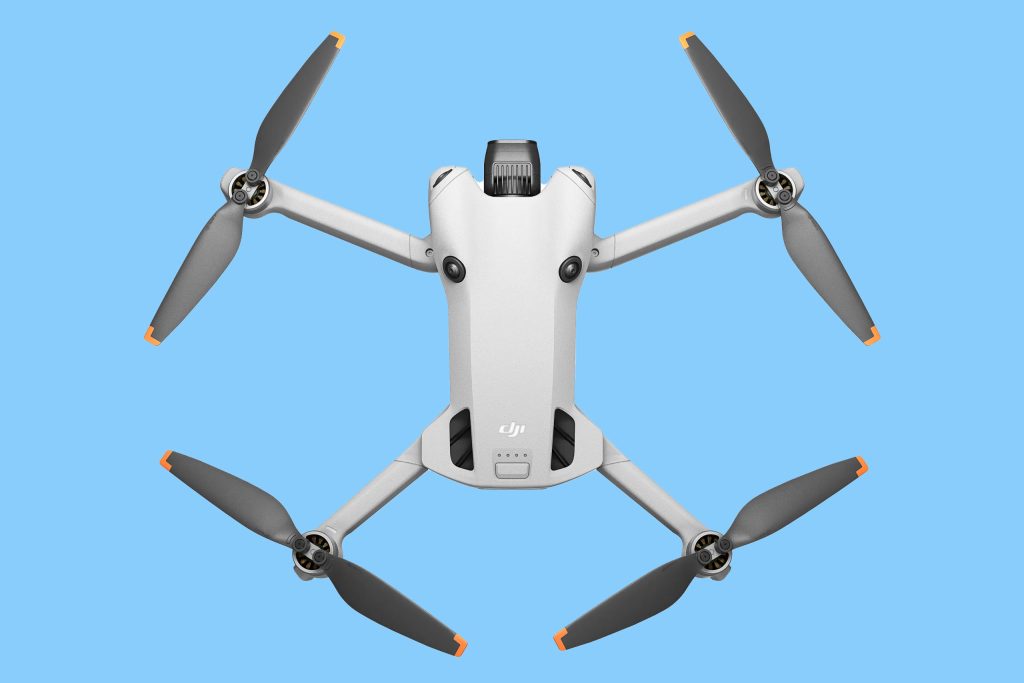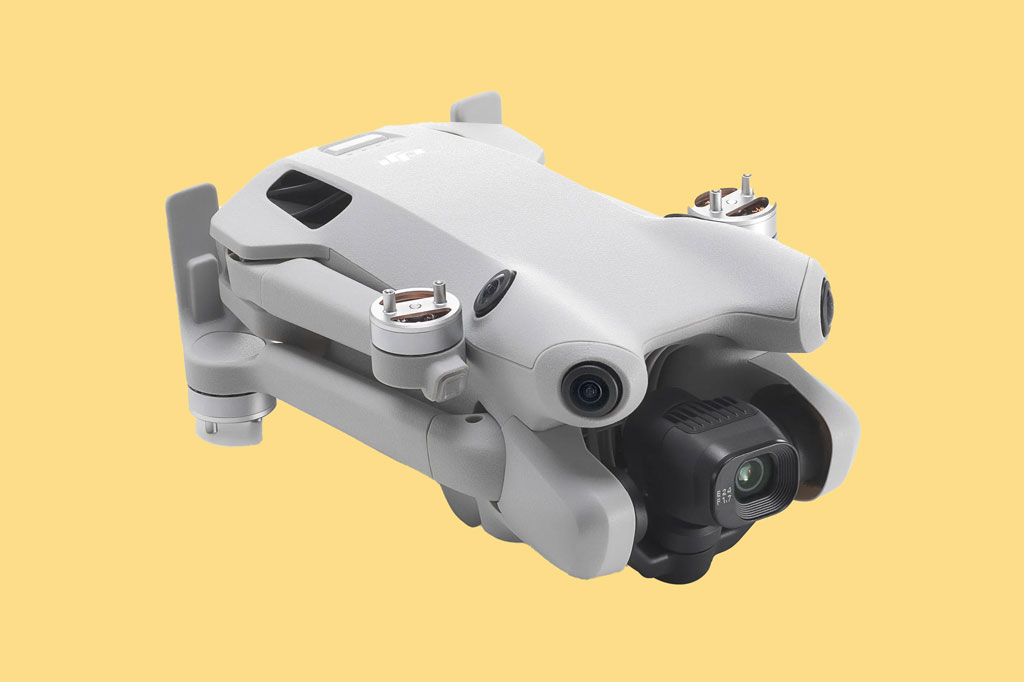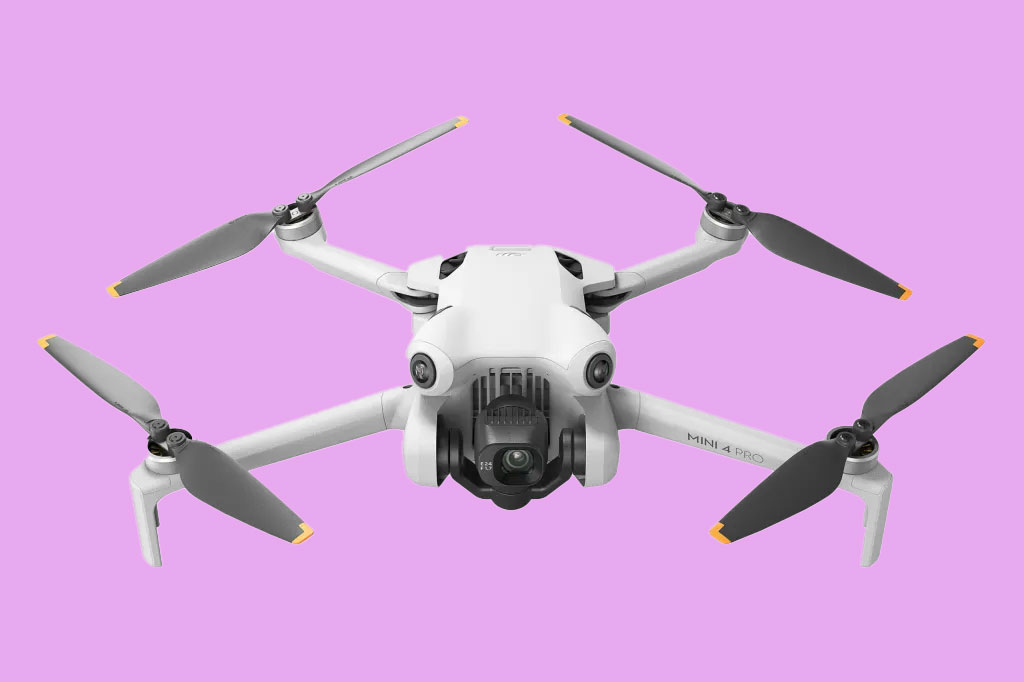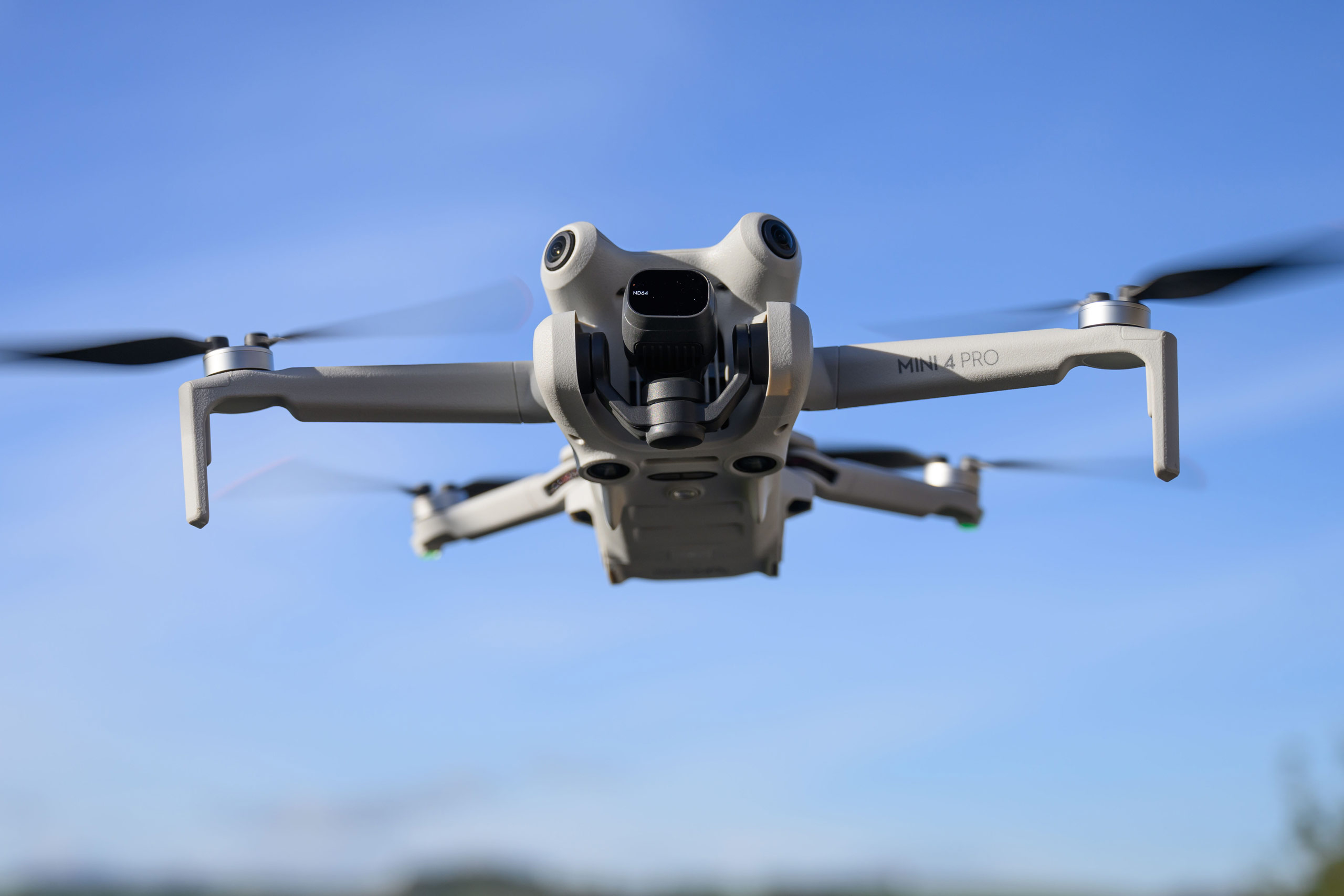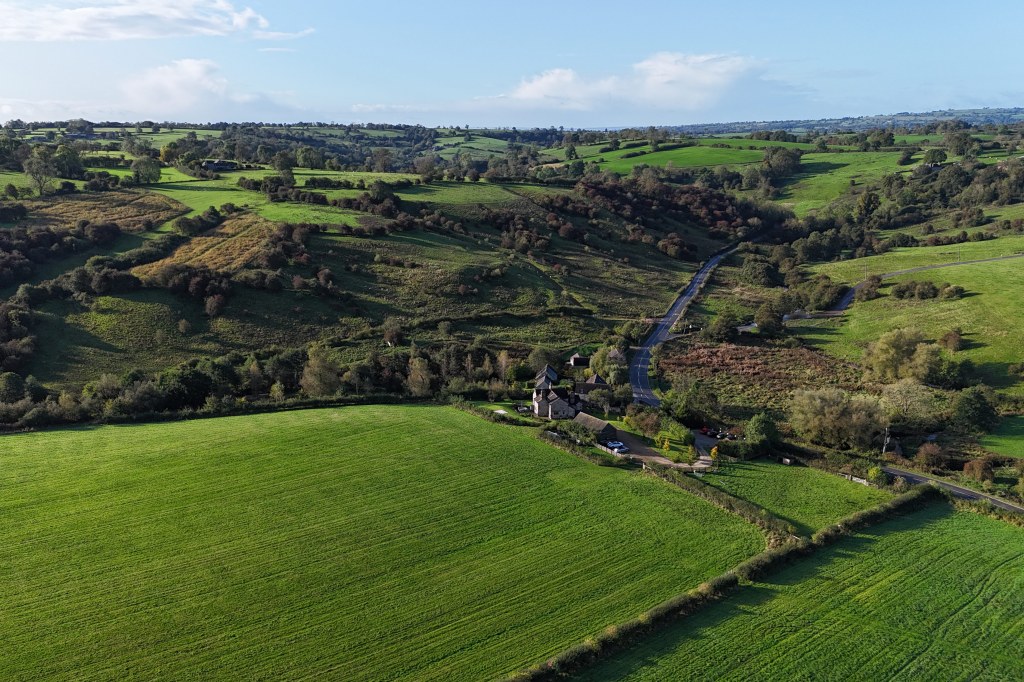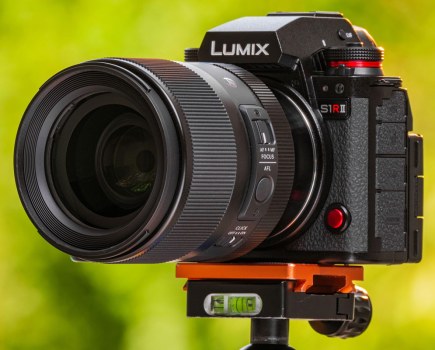Amateur Photographer verdict
A great array of features in a tiny, lightweight form, and a worthy upgrade to the Mini 3 Pro most notably for its 4K video capacity.- Regulation-friendly flying
- Excellent 4K video
- 12 or 48MP stills
- Not robust
- Screw-fixed propellers (rather than bayonet)
- No lens hood so flare can occur
The DJI Mini 4 Pro claims to be the ultimate all-rounder amongst lightweight portable drones: it may even join our list of best drones with cameras.
At under 249g, it punches above its weight for its image-quality. Angela Nicholson has been at the control sticks and took this compact drone for a test flight. Read on to find out how the Mini 4 Pro performs in aerial photography.
DJI Mini 4 Pro – At a glance
- $759 / £619 with the DJI RC-N2 controller
- $1,259 / £779 with the DJI RC2 controller
- Drone with integrated camera
- Weighs less than 249g
- 12/48MP 1/1.3-inch CMOS sensor
- 4K video recording at up to 100p
- 24mm equivalent f/1.7 lens
- 3-axis mechanical stabilisation
- www.dji.com
DJI Mini 4 Pro – Features
- Folding design – As usual, the drone’s arms fold against the body to make it easier to transport
- Propellers – The four propellers are user-replaceable, but a small screwdriver is required to attach each blade
- Object detection – Sensors around the drone’s body inform the object avoidance system
- Vertical or horizontal shooting – The camera can be rotated through 90° for vertical shooting
The DJI Mini 4 Pro remains the most recent of DJI’s line-up of drones weighing less than 250g. This weight is crucial as it only requires users to have an Operator ID from the CAA to fly the Mini 4 Pro in the UK. Once that’s sorted, provided you have the landowner’s permissions to take-off and land, you can fly it almost anywhere except for designated flight restriction zones such as airports, military zones, and prisons. It’s a different story in different states of the USA, as our readers there will doubtless know. If not, you can find out.
Predictably, ensuring the Mini 4 Pro stays under the 249g mark inclusive of its battery, propellers, and a microSD card, gives it a rather fragile feel. But like its predecessor, the Mini 3 Pro, you still get a 1/1.3-inch type sensor in the camera.
Again like the Mini 3 Pro, the standard Intelligent Flight Battery that comes with the drone allows up to 34 minutes of flying. A beefier Intelligent Flight Battery Plus boosts that to 45-minutes but it pushes the drone’s weight above 250g, so DJI doesn’t sell it in the UK.
Camera capabilities
DJI appears to have used the same camera hardware in the Mini 4 Pro as is in the Mini 3 Pro. Consequently, its sensor has a quad-Bayer design. Essentially, this means every pixel is split into four sub-units that can report individually or collectively, so there’s a choice of shooting 12MP or 48MP images in DNG raw and JPEG format.
The lens is also the same 24mm-equivalent optic with a fixed aperture of f/1.7. There’s a familiar sensitivity range of ISO 100-6400 in Normal mode and a shutter speed range of 1/16,000 to 2 sec when shooting 12MP images, or 1/8000 to 2 secs when shooting 48MP images. What is new, however, is a switch to Normal, 10-bit HLG (for compatible TVs) and 10-bit D-Log M video profiles instead of Normal and D-Cinelike. In addition, the frame rate in SlowMo mode for 4K (3840 x 2160) video is boosted from 60fps to 100fps. In regular video mode, the maximum frame rate for 4K video is 60fps.
Interestingly, DJI has ditched the 2.7K video option that’s available with the Mini 3 Pro but Full HD recording is still possible up to 60fps (200fps in SlowMo mode).
Automated features
Like most of DJI’s other recent drones, the Mini 4 Pro incorporates nifty features like Mastershots, FocusTrack, and QuickShots that simplify capturing dynamic video. It’s also possible to rotate the camera through 90° for portrait orientation shooting with a tap on the controller.
In addition, DJI has upgraded the Mini 4 Pro’s obstacle avoidance system to omnidirectional by adding upward-facing sensors. That’s useful if you’re flying under trees or bridges. Overall, the system performs very well, although it’s deactivated when the drone is flying in an automated mode, so you need to be alert to potential collisions. There are also times when you’ll need to turn off the obstacle avoidance system to let you get close to a subject or fly between trees. This is in the Safety section of the menu on the controller.
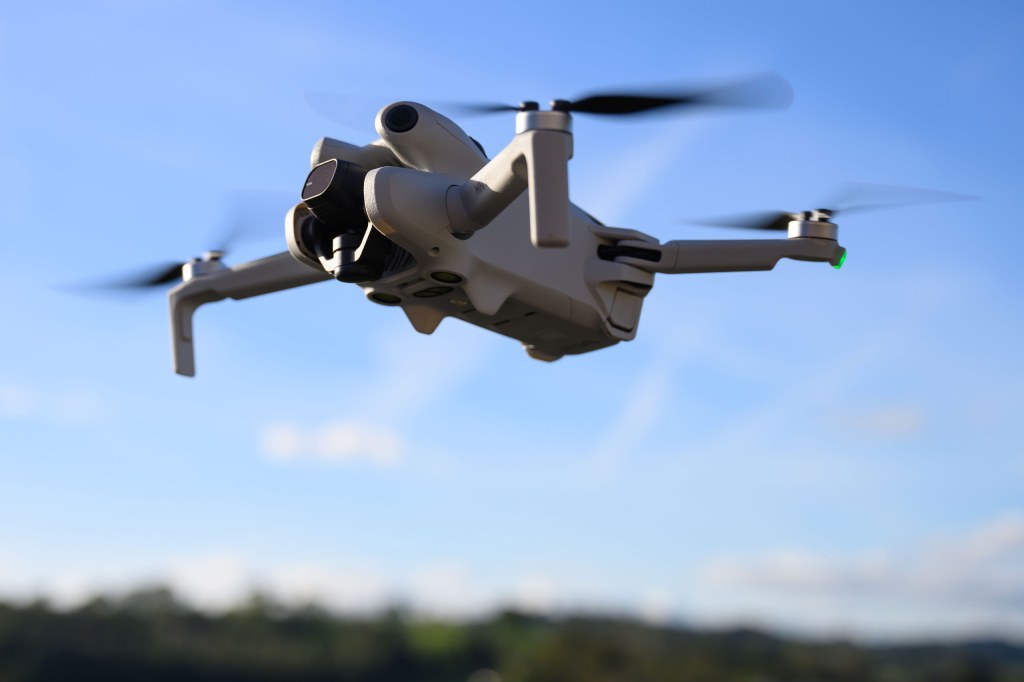
The Mini 4 Pro has a claimed wind resistance of 10m/s (22.3mph) and it stays put in a light breeze, but you’ll hear the motors change pitch as it’s buffeted. Nevertheless, the gimbal does a great job of stabilising the footage.
Image Quality
While they may not match those from a full-frame camera, the results from the DJI Mini 4 Pro are impressive and certainly capable of delivering the ‘wow’ factor. In the Normal colour setting, the colours are vibrant and just the right side of being too saturated while the contrast is good. Switching to D-Log M delivers flatter footage with scope for grading to get it looking as you like.

Generally, the JPEGs look punchier than the raw files and they can look great. However, when the results are viewed at 100% on a larger screen, the sharpening and contrast sometimes look harsh, especially in 48MP images. Consequently, after even light editing, the raw files often deliver more acceptable images.
Flare isn’t a major issue with the Mini 4 Pro, but it is an occasional problem. In video you may see bands of low contrast pass across the frame as the drone moves relative to the sun, which isn’t a big problem and can be attractive, but there’s sometimes a bright spot that draws the eye in stills and video.

Controller choice
DJI offers the Mini 4 Pro with either the DJI RC-N2 controller or the DJI RC2 controller. Of the two, the DJI RC2 is the better choice as it has its own screen and doesn’t require a smartphone to be connected. This means its quicker and easier to get ready to fly, plus your phone is free for normal duties. But it adds a hefty $200 / £180 to the price.
DJI Mini 4 Pro – Verdict
The DJI Mini 4 Pro doesn’t make any significant upgrades on the Mini 3 Pro, especially for those more interested in aerial photography than videography. It’s certainly not enough to tempt most Mini 3 Pro users to upgrade. However, its price is so close to that of its predecessor that it makes the logical choice between the two.
The Mini 4 Pro packs an impressive array of features into its tiny, lightweight form and is very easy to fly. And while the Mini 3 (£429 with the DJI RC-N1 controller or £459 with the DJI RC) maybe a more palatable price for first-time drone pilots, the Mini 4 Pro is a great option for experienced fliers looking for a smaller alternative to their main drone.
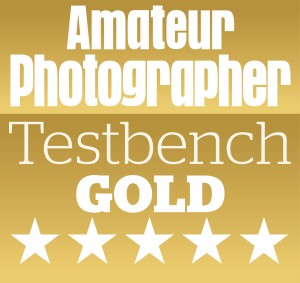
Related reading:


